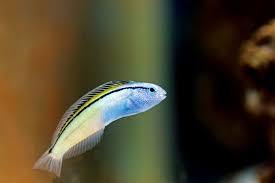
Wildflowers, often regarded for their natural beauty and ecological importance, play a crucial role in supporting livelihoods and driving local economic development in communities around the world. In this article, we delve into the multifaceted contributions of wildflowers to sustainable economic growth, highlighting their significance in various sectors and industries.
**1. Ecotourism and Nature-Based Recreation:**
Wildflower-rich landscapes attract tourists and nature enthusiasts, driving ecotourism and nature-based recreation activities in rural and natural areas. Visitors flock to destinations renowned for their wildflower displays, contributing to local economies through spending on accommodation, dining, guided tours, and outdoor recreation services. Ecotourism enterprises centered around wildflower hotspots create employment opportunities for local residents and stimulate demand for hospitality and tourism-related services.
**2. Floral Industry and Horticultural Trade:**
Wildflowers are prized for their ornamental value and are harvested for use in the floral industry, contributing to the production of cut flowers, floral arrangements, and decorative foliage. Wildflower cultivation and harvesting provide income for rural farmers and small-scale growers, who supply local markets, florists, and wholesalers with fresh blooms and foliage. The horticultural trade associated with wildflowers supports livelihoods along the supply chain, including transportation, distribution, and retailing activities.
**3. Medicinal and Herbal Products:**
Many wildflowers possess medicinal properties and are utilized in traditional herbal remedies and natural healthcare products. Wildflower-based herbal teas, tinctures, and skincare products are valued for their therapeutic benefits and natural healing properties. Harvesting and processing wildflowers for medicinal and herbal products create opportunities for small-scale entrepreneurs and herbalists to generate income while preserving traditional knowledge and cultural heritage.
**4. Sustainable Agriculture and Pollinator Services:**
Wildflowers play a crucial role in supporting agricultural productivity through pollination services provided by bees, butterflies, and other pollinators. Farmers benefit from wildflower plantings and hedgerows that enhance pollinator habitat and promote biodiversity on agricultural lands. By attracting pollinators, wildflowers improve crop yields, enhance fruit set, and support the production of high-value crops such as fruits, vegetables, and nuts, contributing to rural livelihoods and food security.
**5. Wildcrafting and Foraging Activities:**
Wildflowers are harvested for culinary, artisanal, and craft purposes in wildcrafting and foraging activities. Wildcrafters collect edible flowers, wild herbs, and natural materials from wildflower-rich habitats, incorporating them into gourmet cuisine, artisanal products, and handmade crafts. Wildcrafting enterprises create income-generating opportunities for local artisans, chefs, and food producers, while promoting sustainable harvesting practices and cultural traditions.
**6. Environmental Services and Carbon Sequestration:**
Wildflowers provide valuable environmental services, including soil stabilization, erosion control, and carbon sequestration, which contribute to ecosystem resilience and climate change mitigation. Restoration and conservation projects focused on wildflower habitats enhance ecosystem services and promote sustainable land management practices. Investing in wildflower conservation and restoration initiatives yields long-term economic benefits by safeguarding natural resources and enhancing ecosystem health and resilience.
**7. Cultural and Heritage Tourism:**
Wildflowers are deeply intertwined with cultural traditions, folklore, and indigenous knowledge systems, attracting visitors interested in cultural and heritage tourism experiences. Indigenous communities share traditional knowledge about wildflowers and their cultural significance through guided tours, storytelling, and experiential learning activities. Cultural tourism initiatives centered around wildflowers celebrate cultural diversity, preserve intangible heritage, and generate income for indigenous artisans and community-based enterprises.
In conclusion, wildflowers play a vital role in supporting livelihoods, promoting sustainable economic development, and enhancing the well-being of communities worldwide. By recognizing the economic value of wildflowers and investing in their conservation and sustainable management, we can harness their potential to create prosperity, preserve biodiversity, and build resilient, inclusive economies for present and future generations.










